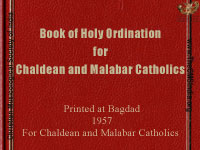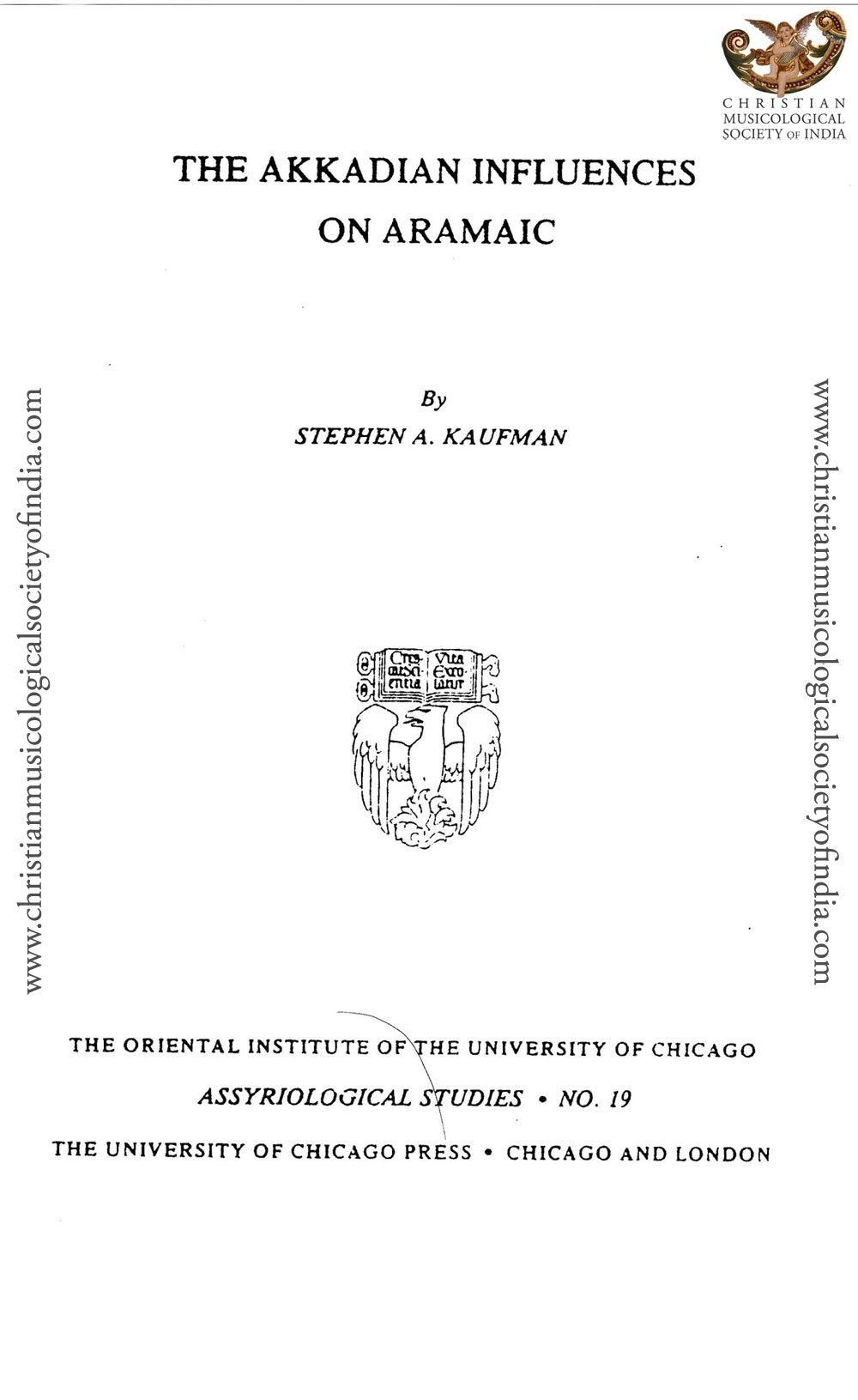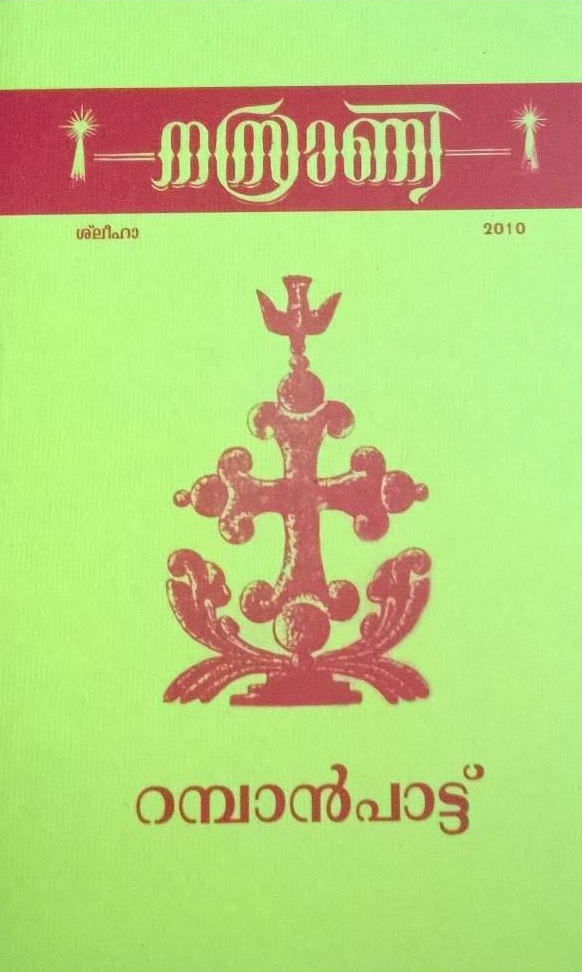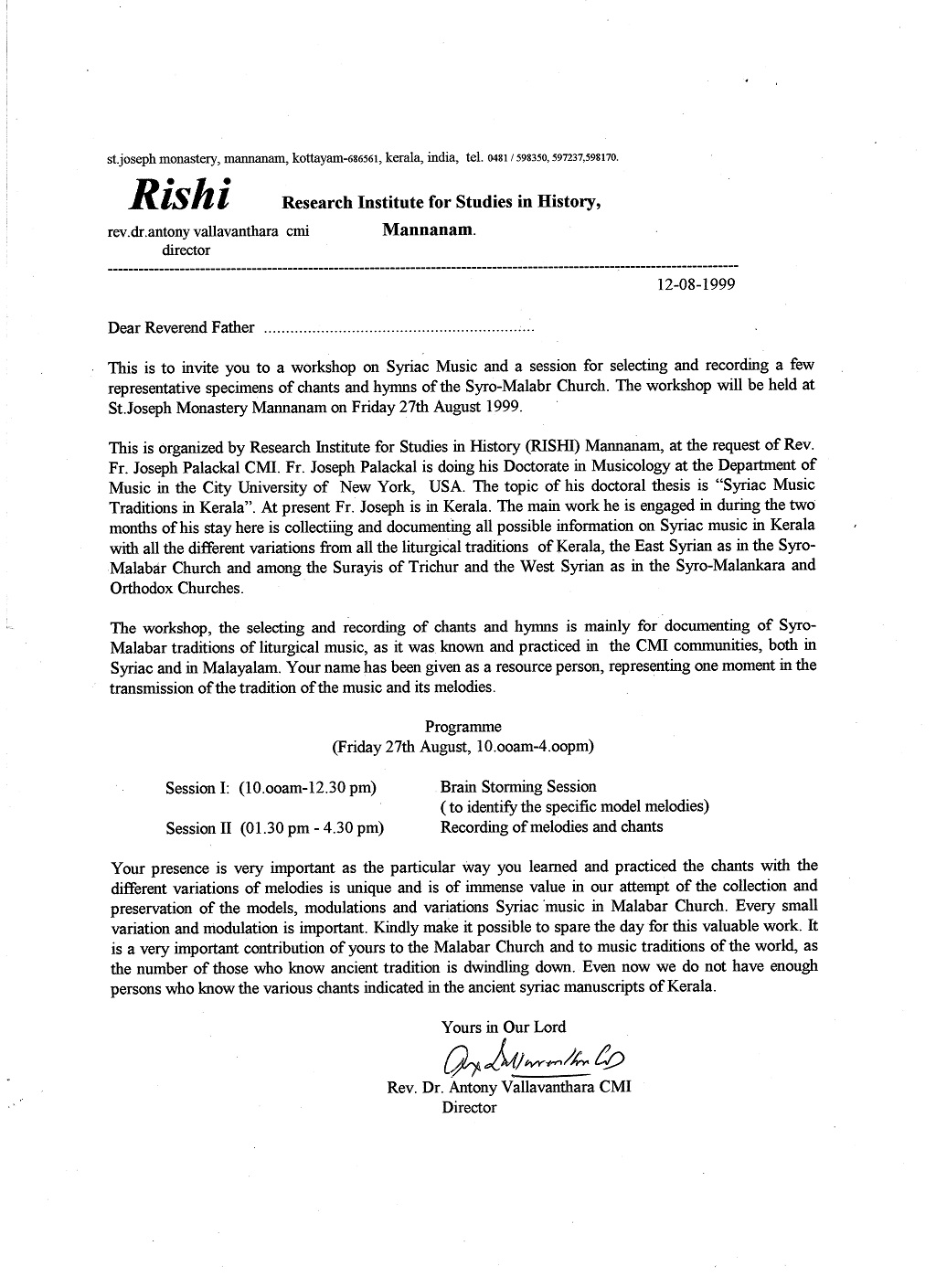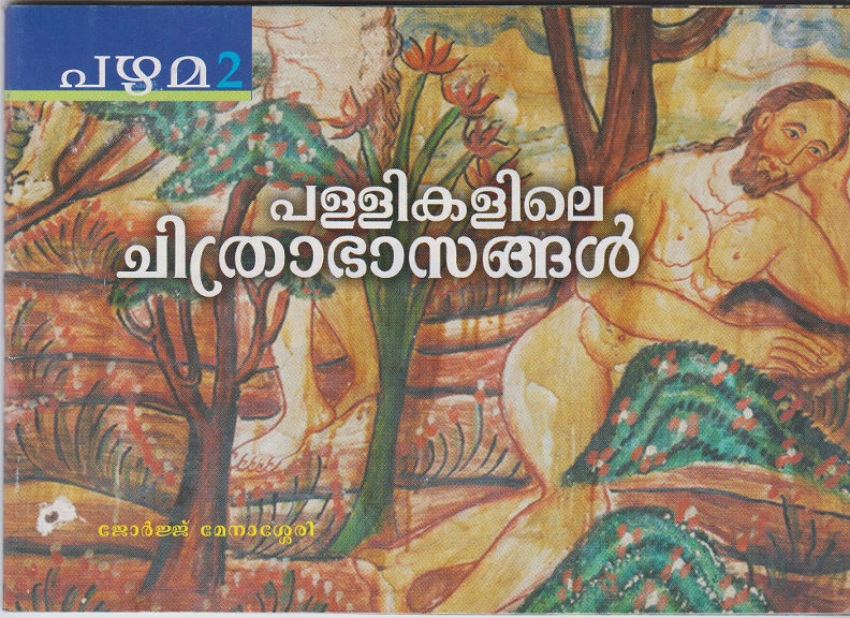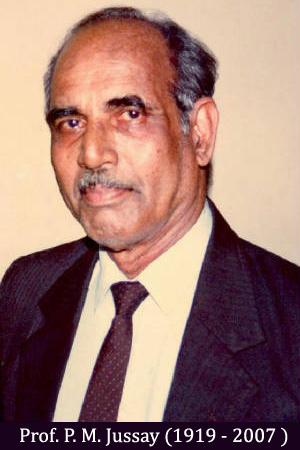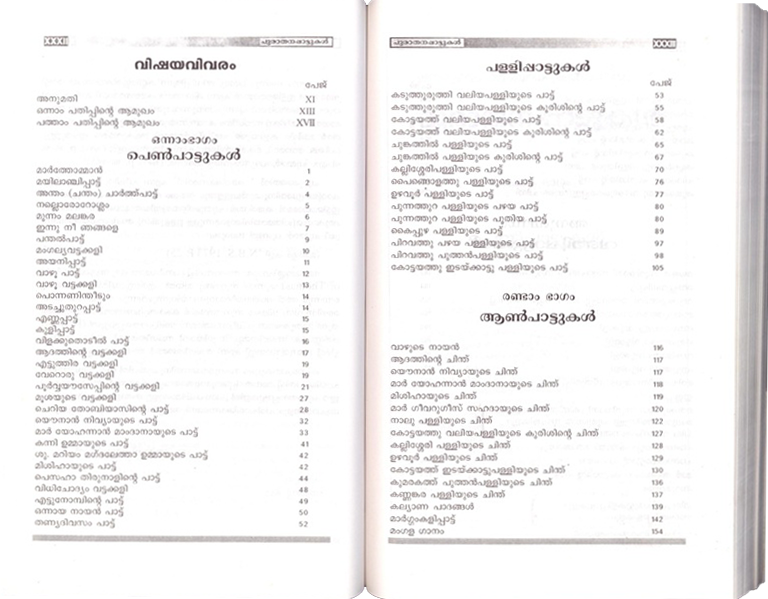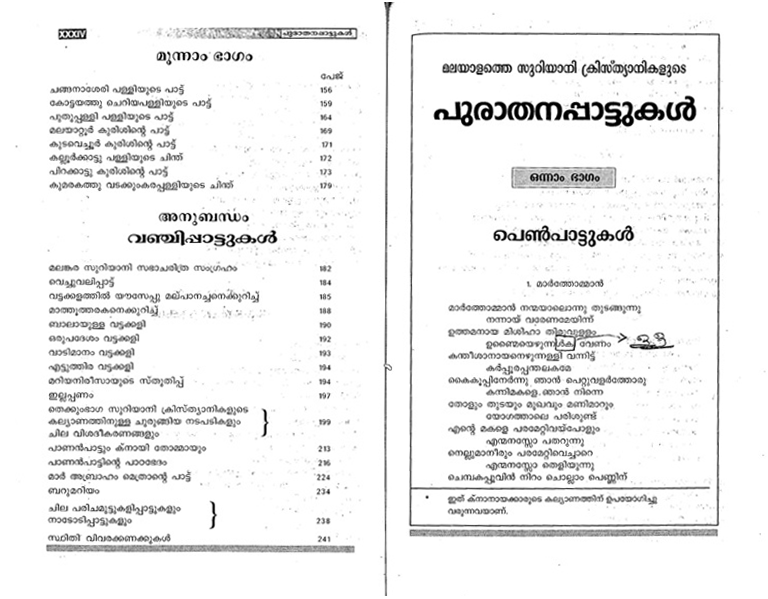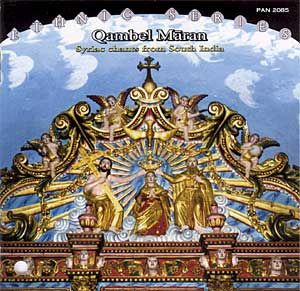Page No. 1
No. 50 to 1
<< Previous Page Goto Item No. ---> 5040 3020101
| Ref. Code | Resource desciption | |
|
RR 050 008-050 |
 (Download Sample Pdf) |
Thaksa of 1901 (Holy Mass Book)This is one of the oldest versions of Syro Malabar Church published in 1901 Approved by Bishop Mar Louis Pazheparambil (Vicar Apostolica of Ernakulam), Bishop Mar John Menachery((Vicar Apostolica of Trichur), Bishop mar Mathew Makil (Vicar Apostolica of Kottayam)
HOLY MASS BOOK WITH THUKKASA THE RITUALS WITH THAKSA THE KOODASHA D RAZA BOOK OF RAZA |
|
RR 049 008-049 |
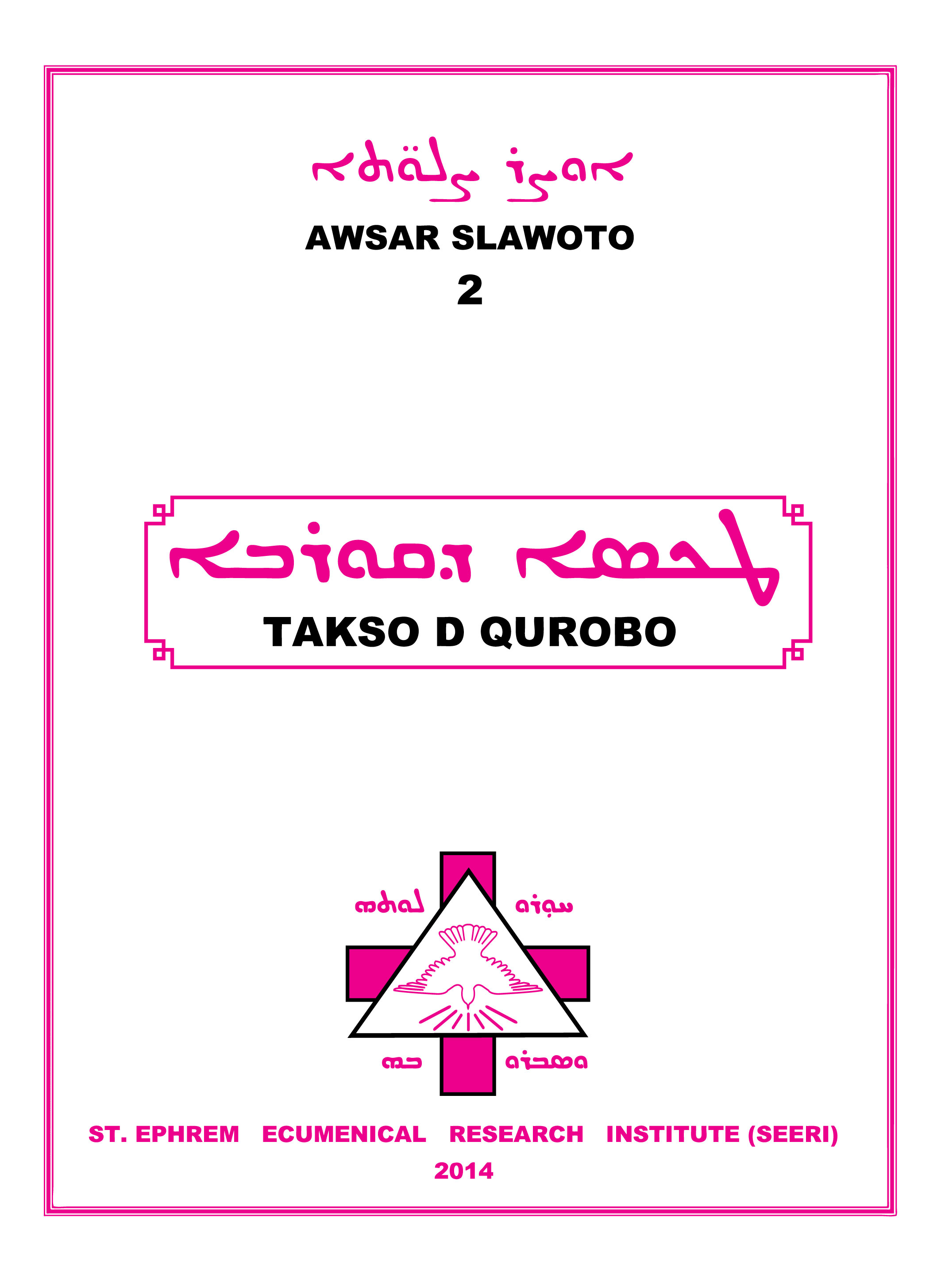 (Download Sample Pdf) |
Awsar Slawoto 2 Takso d QuroboPublished by St. Ephrem Ecumenical Research Institute (SEERI), Kottayam
|
|
RR 048 008-048 |

(Download Sample Pdf) |
Kudasha Daslihe Thuwane (Mass Of Apostles )ശ്ലീഹന്മാരുടെ കൂദാശ ക്രമം(Sleehanmaarude Kudasha Kramam) - The Qurbana order of 1945
Reading for the three ninivian lent (Bautha abstinence days) Keywords: Fr. Mathew Vadakel, Thaksa, Mangalappuzha. |
|
RR 047 008-047 |
 (Download Sample Pdf) |
Thaksa d' Qudasa (The Order of Liturgy)Compiled by Printed at - Puttenpalli Seminary Published on - 1901 December 21 Imprimatur
Content
|
|
RR 046 008-046 |
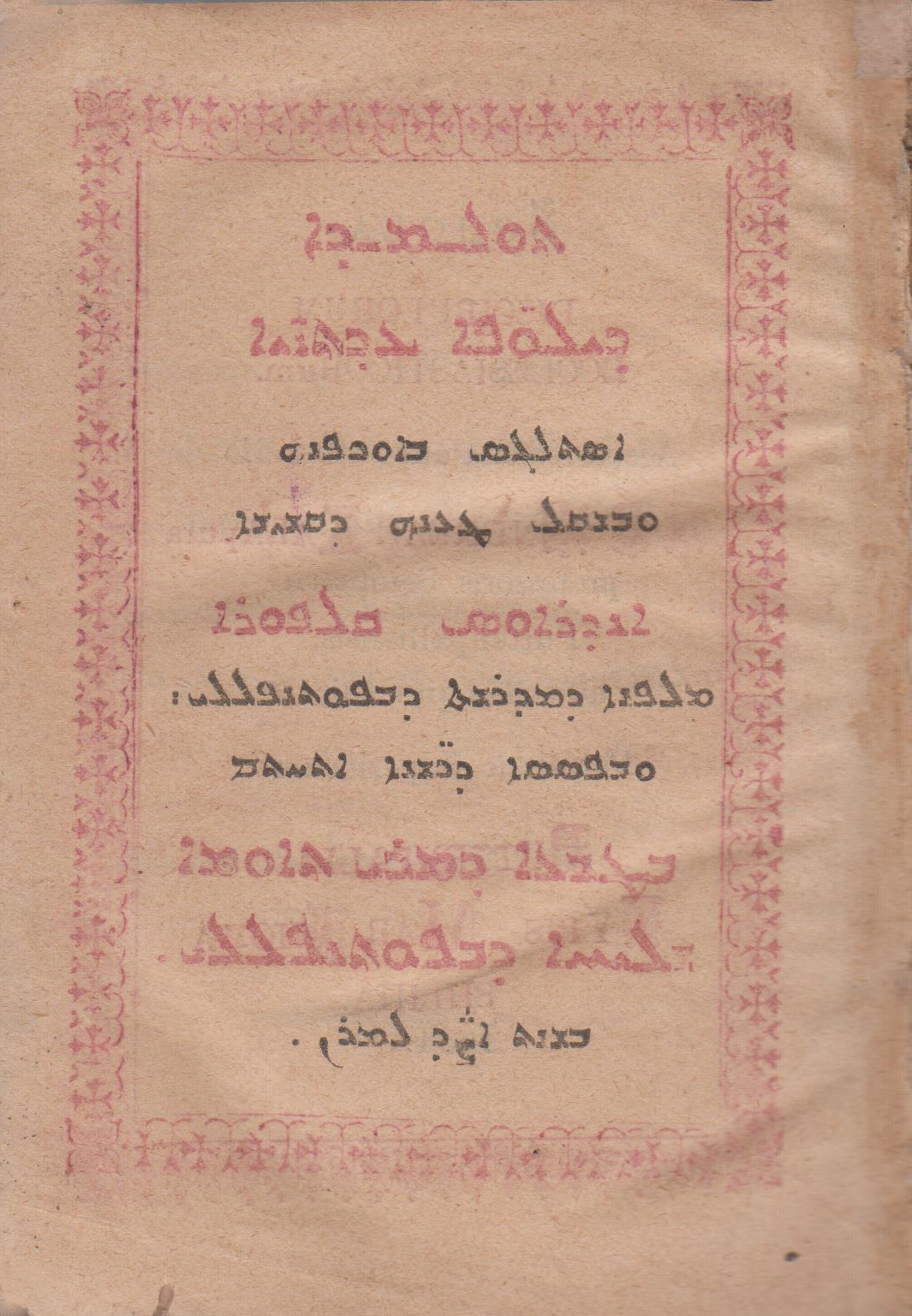 (Download Sample Pdf) |
Thukasa (Liturgical Rubrics for Priests)Compiled by Printed at - Mar Thoma Sliha Press.
|
|
RR 045 008-045 |
 (Download Sample Pdf) |
Marggam Kali-Aattaprakaramമാർഗം കളി-ആട്ടപ്രകാരം Dance guide for Marggam Kali (Dance of 'the way')(Study of performing art) By Dr. Chummar Choondal & Dr. Jacob Vellian
|
|
RR 044 008-044 |
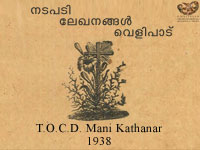 (Download Sample Pdf) |
Nadapadi, Lekhanangal, Velipaaduനടപടി, ലേഖനങ്ങൾ, വെളിപാടു By T.O.C.D. Mani Kathanar Printed at - St. Joseph's Press, Mannanam Year - 1938
|
|
RR 043 008-043 |
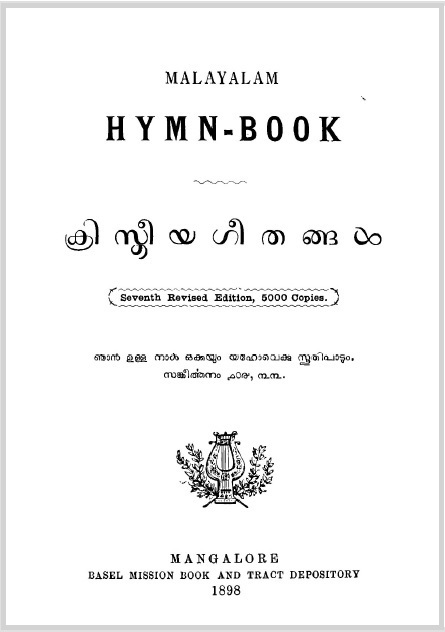 (Download Sample Pdf) |
Malayalam Hymn-Book
|
|
RR 042 008-042 |
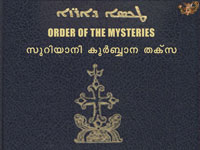 (Download Sample Pdf) |
Suriyani Qurbana Thaksa 2003
|
|
RR 041 008-041 |
(Download Sample Pdf) |
Book of Holy Ordination for Chaldean and Malabar Catholics (1957 Pontificial)(Book of Holy Ordination) Printed at - Bagdad Printed in - 1957 for Chaldean catholics and Malabar catholics Language - Syriac |
|
RR 040 008-040 |
(Download Sample Pdf) |
The Akkadian Influences on Aramaicby Stephen A. Kaufman
|
RR 039 008-039
|
(Download Sample Pdf) |
റമ്പാൻപാട്ട് |
RR 038 008-038 |
(Download Sample Pdf) | ആരാധനാക്രമത്തിൽ സംഗീതത്തിനുള്ള സ്ഥാനംThe ancient Syriac (Aramaic) chant tradition is one of the identity markers of the Syro-Malabar Church in Kerala, India. Preservation of these chants should go hand in hand with adaptation of Indian classical and semi-classical styles of music in liturgy. Article written by Joseph J. Palackal ,published in St. Mary's Forane Church Souvenir, Pallippuram, India, pp. 71-77. Language: Malayalam. |
RR 037 008-037 |
കുടുംബ പ്രാർത്ഥനയും ഭജന ഗാനങ്ങളും
|
കുടുംബ പ്രാർത്ഥനയും ഭജന ഗാനങ്ങളും
|
|
RR 036 008-036 |
കലയും ക്രൈസ്തവ വിശ്വാസവും
|
കലയും ക്രൈസ്തവ വിശ്വാസവും - ഒരു ഭാരതീയ സംവാദം
|
RR 035 008-035 |

|
MandoThe New Grove Dictionary of Music and Musicians 2nd edn., vol. 15, edited by Stanley Sadie, John Tyrell. London: Macmillan Publishers, pp. 736-37. Extract A composite genre of poetry, music and dance, popular among the Catholics of Goa and the neighbouring regions on the west coast of India. The origin of the word is obscure. The lyrics in Konkani, the language of Goa, include words borrowed or derived from Portuguese (Goa was a Portuguese colony from ... Published in print: 20 January 2001Published online: 2001 |
RR 034 008-034 |
 |
Ethnomusicology(Official journal of the Society for Ethnomusicology)As the official journal of the Society for Ethnomusicology, Ethnomusicology is the premier publication in the field. Its scholarly articles represent current theoretical perspectives and research in ethnomusicology and related fields, while playing a central role in expanding the discipline in the United States and abroad. Aimed at a diverse audience of musicologists, anthropologists, folklorists, cultural studies scholars, musicians, and others, this inclusive journal also features book, recording, film, video, and multimedia reviews. Peer-reviewed by the Society’s international membership, Ethnomusicology has been published three times a year since the 1950s. |
RR 033 008-033 |

(Download Sample Pdf) |
Puthan paana (പുത്തൻ പാന) -A Musical Study
|
RR 033a 008-033a |
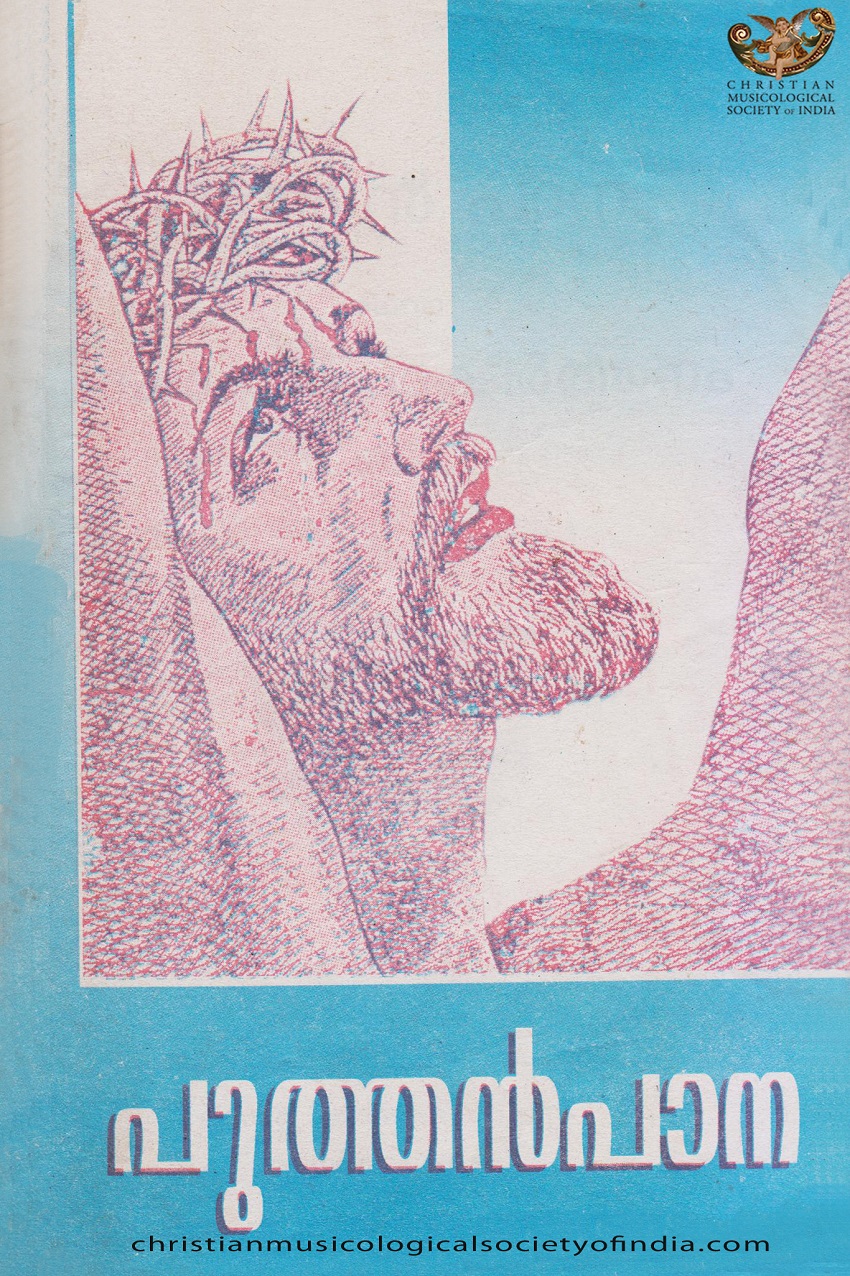
(Pdf extract) |
PUTHANPAANAപുത്തൻപാനഅഥവാരക്ഷാകരവേദകീർത്തനം
Printed by St Joseph's press Mannanam-686 561 Re-imprimatur Mathew Kavukatt (Archbishop of Changanasserry) 12-01-1965 Total pages - 117 |
RR 032 008-032 |
 |
Garland Encyclopedia of World Music Volume 5: South Asia: The Indian SubcontinentEdited by - Alison Arnold (Routledge 1999, 1104 page (s) Related Chapters- Kerala Jewish Music ( p. 949). Kerala Tribal Music (p. 950), Tamil Nadu Christian Music. (pp. 921-927). |
|
RR 031 008-031 |
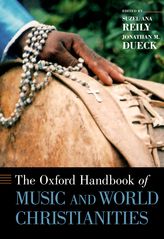
(Pdf extract) |
The Survival Story of Syriac Chants among the St. Thomas Christians in South IndiaA chapter by Joseph J. Palackalincluded in the The Oxford Handbook of Music and World Christianities Print Publication Date: May 2016 Abstract This chapter explores the Syriac chant traditions among the group of South Indian churches, collectively referred to here as the “St. Thomas Christians.” These churches, which encompass a variety of denominational communities in Kerala, trace their origins to the apostolic and Chaldean/East Syriac sources of West Asian Christianity, later articulating also with the Antiochene liturgy and Orthodox Christianity in the late seventeenth and eighteenth centuries. They have defended their linkages with the Syriac liturgical and musical traditions against the incursions of foreign Catholic and Anglican missionaries, and later a wider variety of Catholic and Protestant movements within India. The chapter suggests that they accomplished this, in part, by only selectively accepting musical, liturgical, and theological elements that arrived with each of these missions. But more recently they have accomplished this by retaining Syriac chant melodies even as churches began to sing in vernacular languages such as Malayalam. |
|
RR 030 008-030 |
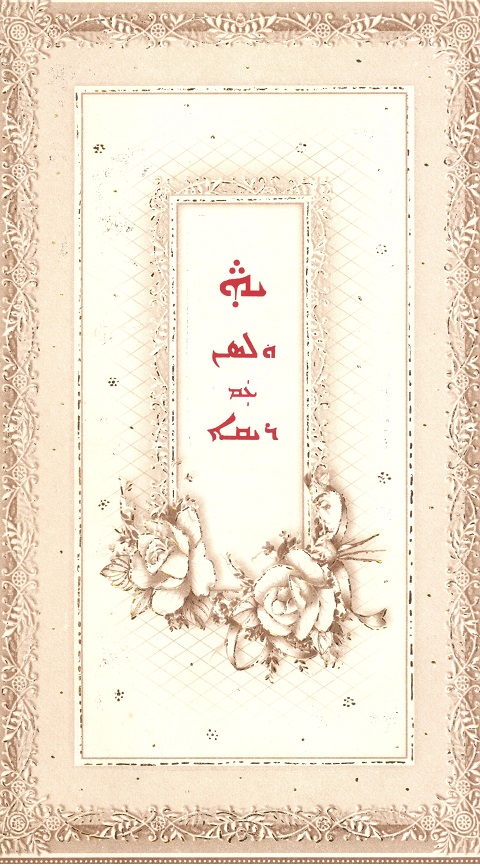
(Download Sample Pdf) |
A Unique Marriage Invitation of Wilson Muriyadan printed in SyriacA unique Marriage Invitation of Wilson weds Rekha printed in Syriac along with English. The Marriage was solemnised on 2-May-2004 at Trissur Mar Adhai Sleeha Church, Paravattany,Trissur  |
|
RR 029 008-029 |
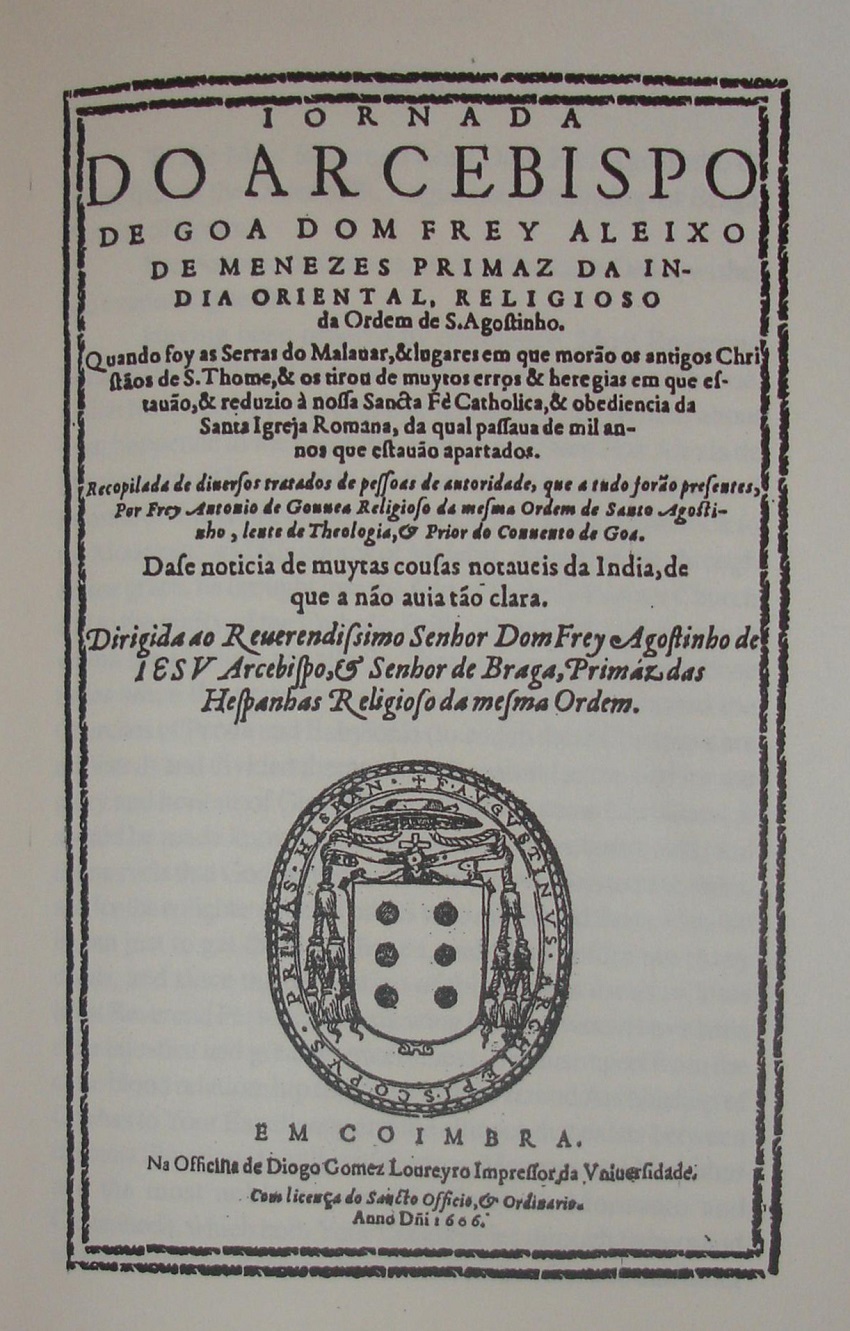
(Download Pdf) |
Jornada do Arcebispo de Goa Dom Frey Alexio de MenezesTitle : Jornada do Arcebispo de Goa Dom Frey Alexio de Menezes Primaz da India Oriental Religioso da Ordem de S. Agostino Printed at Coimbra, Portugal by Diogo Gomez Loureyro, in 1606. Language: Portuguese |
|
RR 028/GA 008-028 |
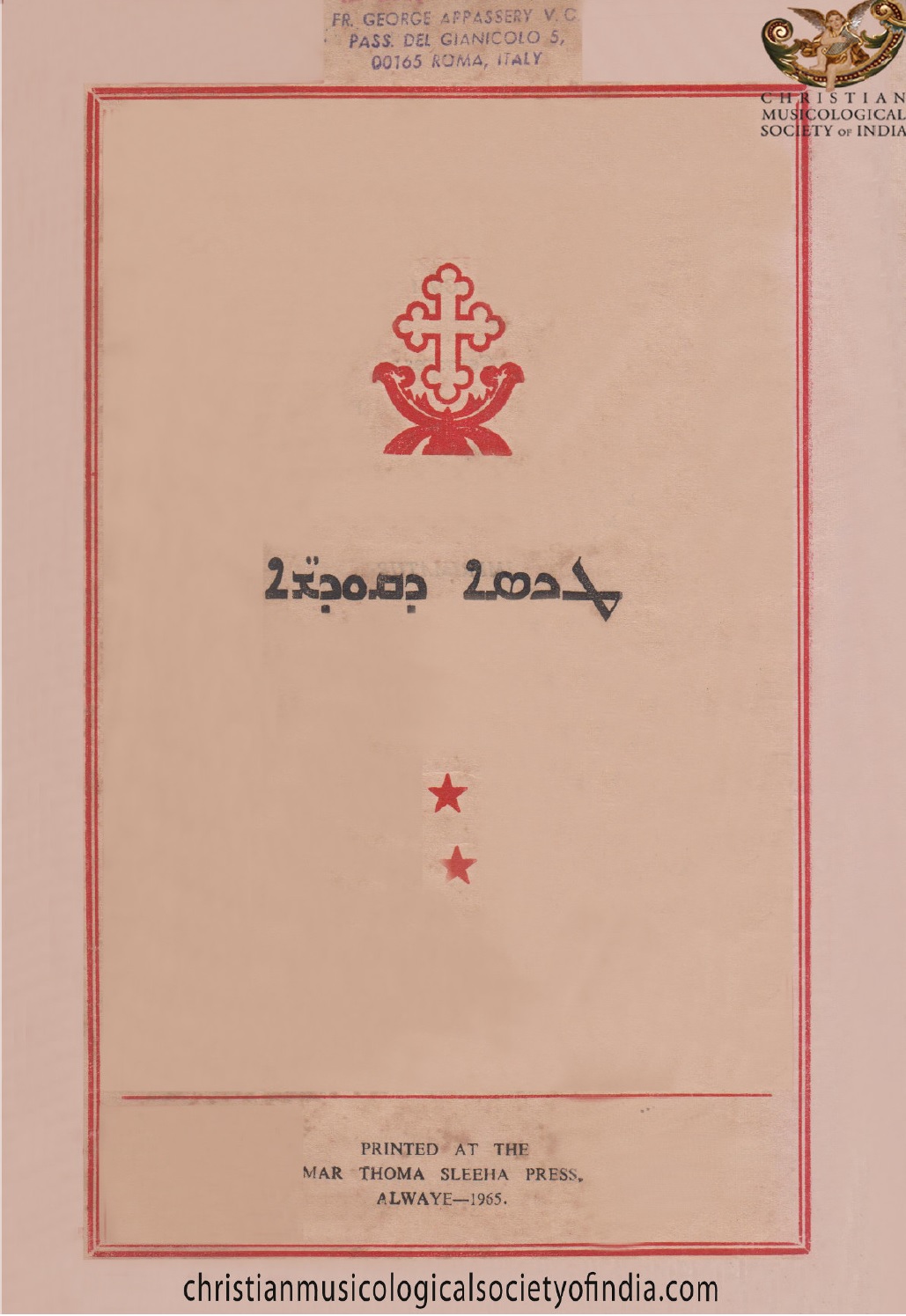 (Download Pdf) |
Syriac Missal of the Syro Malabar ChurchImprimatur (1960) - Archbishop Joseph Parecattil Printed at - Mar Thoma Sleeha Press, Alwaye, 1965.
Courtesy - Fr. George Appassery V. C. Keywords - Syriac thaksa 1960, Mar thoma sleeha press Aluva,Syriac missal 1960, Syro malabar missal, Syro Malabar liturgy |
|
RR 027 008-027 |
 (Download Pdf) |
FIRST HOLY COMMUNION AND SACRAMENT OF CONFIRMATION
His Excellancy Mar Joy Alappatt (Auxiliary Bishop, St. Thomas Syro Malabar Catholic Diocese of Chicago) May-26-2018 St. Jude Syro Malabar Catholic Church, Northern Virginia |
|
RR 026 008-026 |
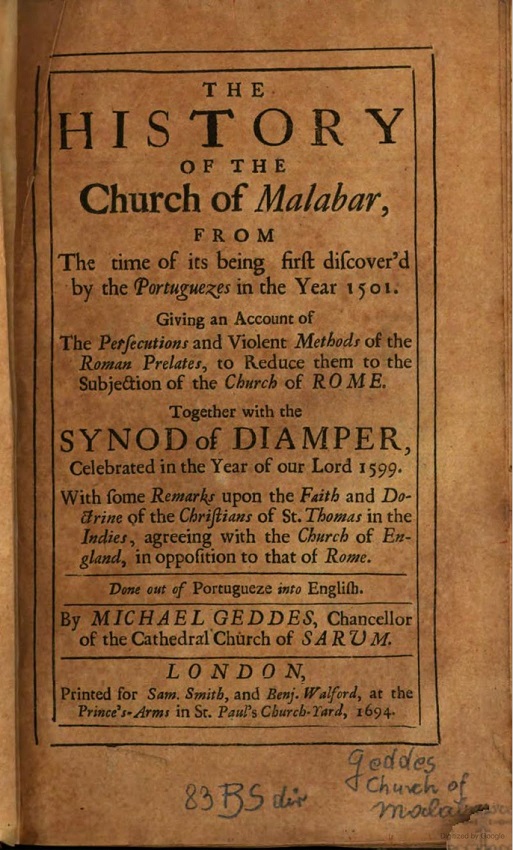
(Download Pdf) |
THE HISTORY OF THE Church of MalabarFROM The time of its being first discover'd by the Portuguezes in the Year 1501. Giving an Account of The Persecutions and Violent Methods of the Roman "Prelates; to Reduce them to the Subjection of the Church of ROME. Together with the SYNOD of DIAMPER, Celebrated in the Year of our Lord 1599. With some Remarks upon the Faith and Do- Urine of the Christians of St. Thomas in the Indies, agreeing with the Church of En- gland, in opposition to that of Rome. Done out of Portugueze into English. By MICHAEL GEDDES, Chancellor of the Cathedral'Church of SARUM LONDON, Printed for Sam. Smith, and Benj. Walford, at the Prince's-Armi in St. Paul's Church-Yard, 1694.
|
|
RR 025 008-025 |
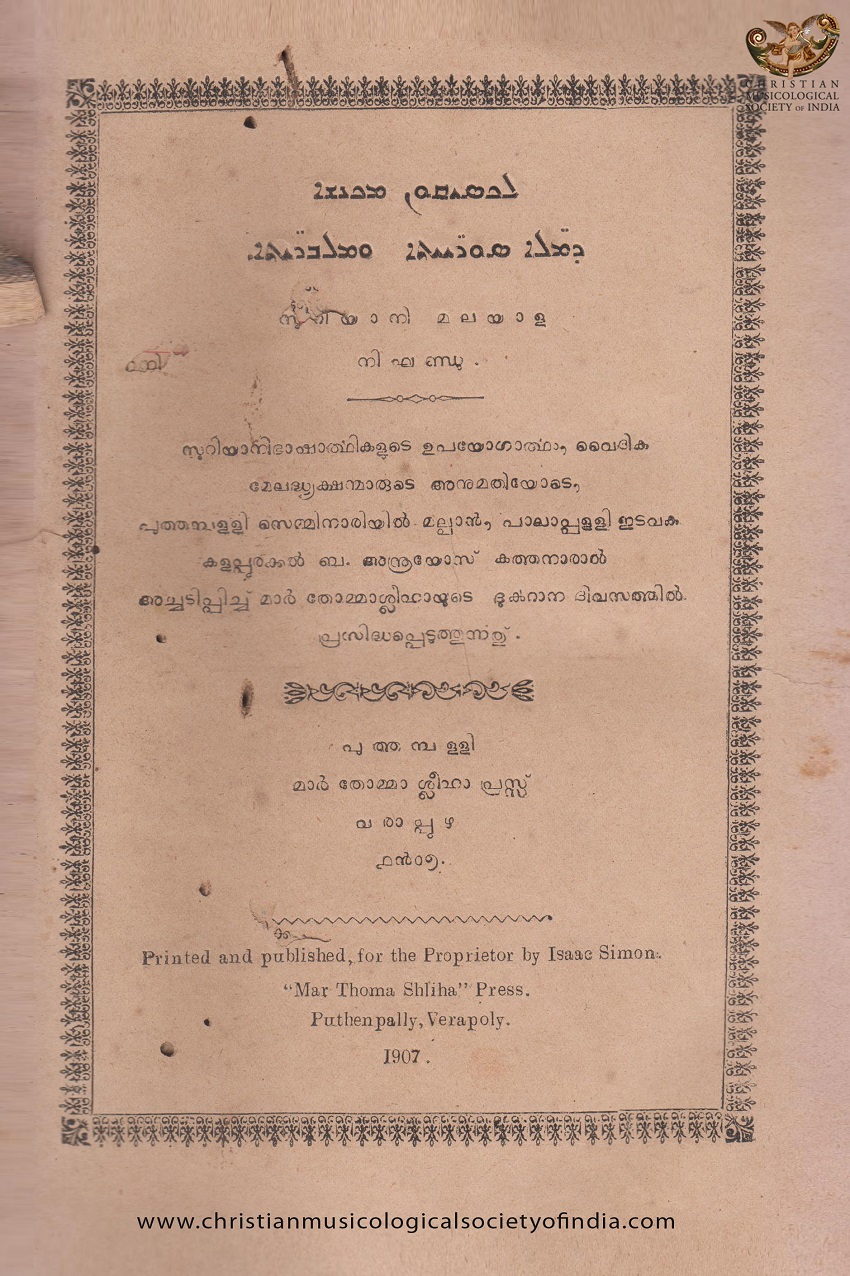
Pdf version |
SURUYANI-MALAYALAM NIKHANDU(A Syriac to Malayalam Dictionary ) Printed & Published by Kalappurackal Anthraose Kathanaar, Rector & Malpan at Puthenpally Seminary, for the use of syriac language students/ Seminarians. Publisehed on Dukhrana (Feast of St. Thomas- 03 July 1907). Printed at Puthenpally Mar Thoma Sleeha Press, Verapoly. Printed and published for the proprietor by Issac Simon at Mar Thoma Sleeha Press, Puthenpally, Verapoly in 1907. |
|
RR 024 008-024 |
Commercial Releases of Christian Karnatic Classical Music by George Panjara -SREE RANJINI |
|
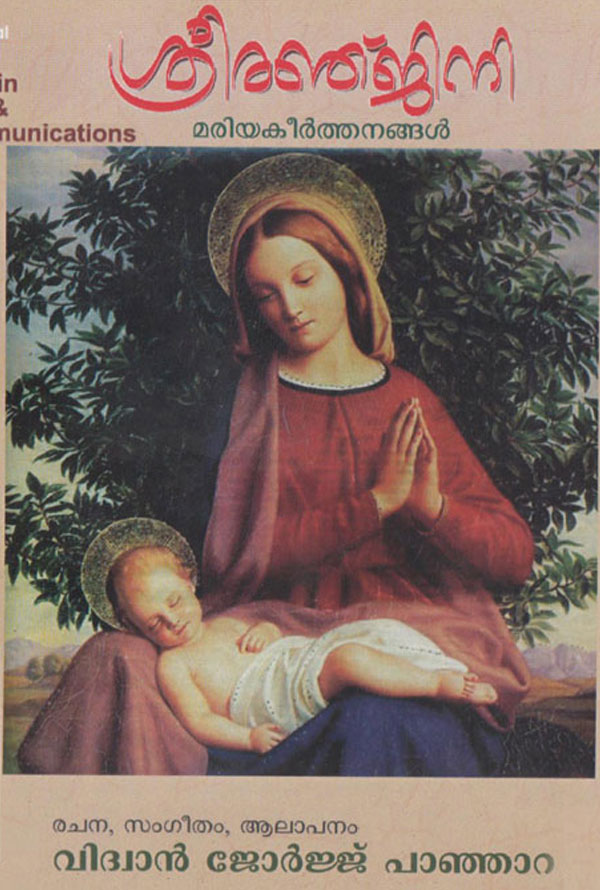 |
SREE RANJINI
|
|
|
RR 023 008-023 |
Commercial Releases of Christian Karnatic Classical Music by George Panjara-NIDANTHA SNEHAM |
|
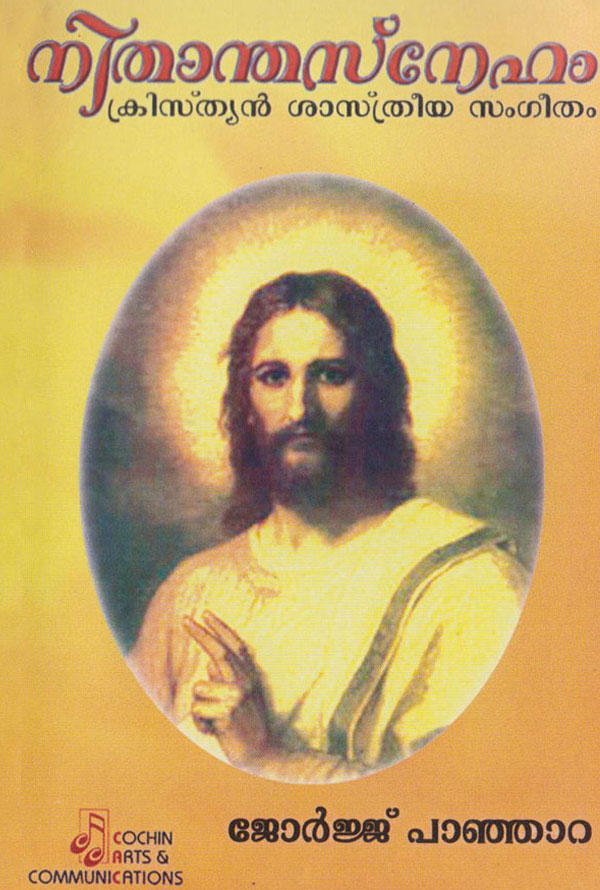 |
NIDANTHA SNEHAM
|
|
|
RR 022 008-022 |
Commercial Releases of Christian Karnatic Classical Music by George Panjara -SREEYESUKEERTHANAM |
|
.
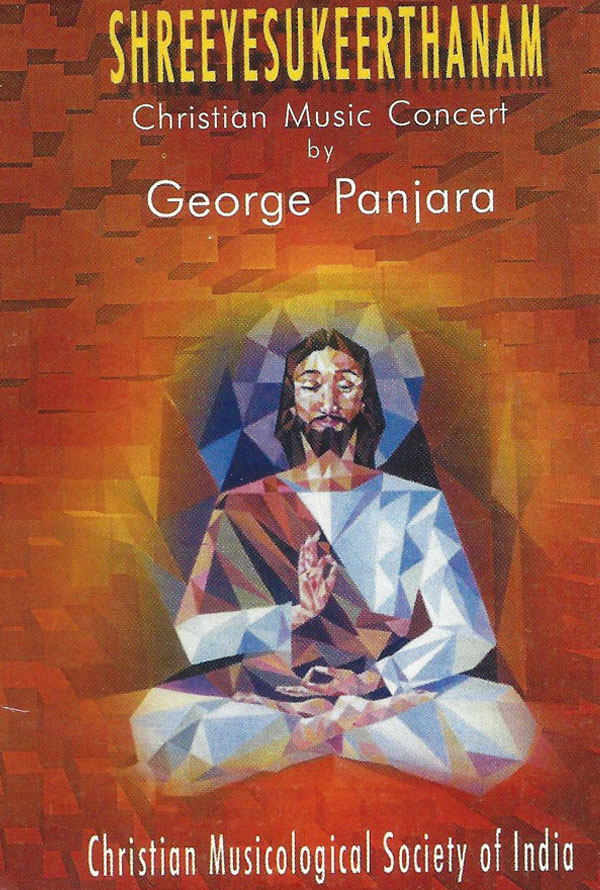 |
SREEYESUKEERTHANAM
|
|
|
RR 021 008-021 |
Commercial Releases of Christian Karnatic Classical Music by George Panjara - Christian Classical Music Concert |
|
 |
Christian Classical Music Concert
|
|
|
RR 020 008-020 |
Commercial Releases of Christian Karnatic Classical Music by George Panjara - MALAYALAM CHRISTIAN CLASSICS |
|
 |
MALAYALAM CHRISTIAN CLASSICS
|
|
|
RR 019 008-019 |
|
Syriac conference letter of invitationThis letter of invitation for the Syriac Conference at St. Joseph’s Monastery at Mannanam, on 27 August 1999, is a remarkable document; the conference was in preparation for an audio recording of a selection of melodies from the Syriac music repertory of the Syro Malabar Church. The recording took place at the Monastery chapel, where these melodies reverberated on a daily basis from the middle of the 19th century until 1962. The recording would eventually be published as a CD by PAN records in Netherlands, under the title "Qambel Maran: Syriac Chants from South India,” in 2002. The CD became a landmark in the history of Christian music in India. This happened to be the first commercial release of Syriac chants from the East Syriac tradition of the Syro Malabar Church. Surprisingly, the CD became a commercial success, went into three reprints, and found a place in many libraries around the world. After spending a few hours of discussions, Fr. Antony Vallavanthara, CMI (1942-2008), who was a zealous promoter of the Syriac heritage, drafted the letter, which was sent to a selected group of CMI priests who were either Syriac scholars or singers. The participants included such significant personalities as Fr. Abel Periyappuram, CMI (1920-2001) and Fr. Emmanuel Thelly (1925-2015), CMI. The purpose of the conference was to determine which melodies should be recorded. An audio recording of this workshop has survived; it will be posted later. Contrary to my expectation, the participants were very enthusiastic and the discussions were vibrant. The closing paragraph in the letter is noteworthy. Though not a musician, Fr. Vallavanthara, a specialist in the history of the Syro Malabar liturgy , writes like a musicologist; he refers to many musical aspects of the Syriac tradition, including the importance of individual and regional variations of the same melody. Fr. Vallavanthara's words to the prospective participants are remarkable: "It is a very important contribution of yours to the Malabar Church and to "music traditions of the world." Those words were prophetic. May his soul rest in peace, and may he continue to intercede for the success of the Aramaic Project. Joseph J. Palackal |
|
RR 018 008-018 |
പള്ളികളിലെ ചിത്രാഭാസങ്ങൾ
|
|
|
RR 017 008-017 |
|
ആഘോഷമായ സ്ലീവാപ്പാഥ
|
|
RR 016 008-016 |

(Download Sample Pdf) |
The wedding Songs of the Cochin Jews and of the Knanite Christians of KeralaA Study in Comparison. Prof. P. M. Jussay
Note By Dr. Joseph J. Palackal Photo courtesy: P. J. Joseph |
|
RR 015 008-015 |
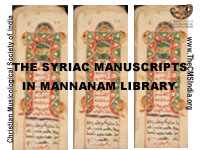
(Download Sample Pdf)
|
The Syriac Manuscripts in Mannanam LibraryNOTE: Fr. Emmanuel Thelly, C. M. I. (1925-2015) was kind enough to give me this copy of the paper that he presented at the Symposium Syriacum VIII, Eigh-th International Congress for Syriac Studies, held at the University of Sydney, Australia from June 26 to 30, 2000. Fr. Thelly spent innumerable hours at the archive at St. Joseph’s Monastery at Mannanam to gather the information that is presented here. This is a golden treasure for researchers on an array of topics, ranging from language and linguistics to music and history. I hope these manuscripts are still intact at the archive. Recently, the monastery has decided to digitize the materials at the Archive and make them public. That will be a great boon to scholars around the world. I cherish the sacred memory of Fr. Thelly, who helped me immensely during research for my doctoral dissertation on Syriac chants at the Graduate Center of the City University of New York, and pray for his continuous blessings on the Aramaic Project and anyone who is involved in Syriac studies.
Joseph J. Palackal |
|
* RR 014 008-014 |
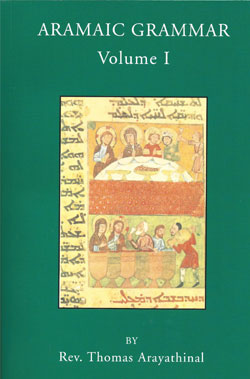
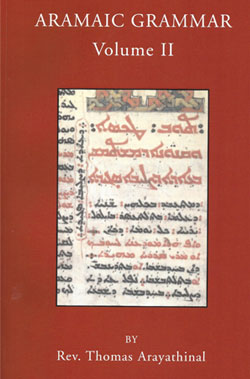 (Download Sample Pdf) 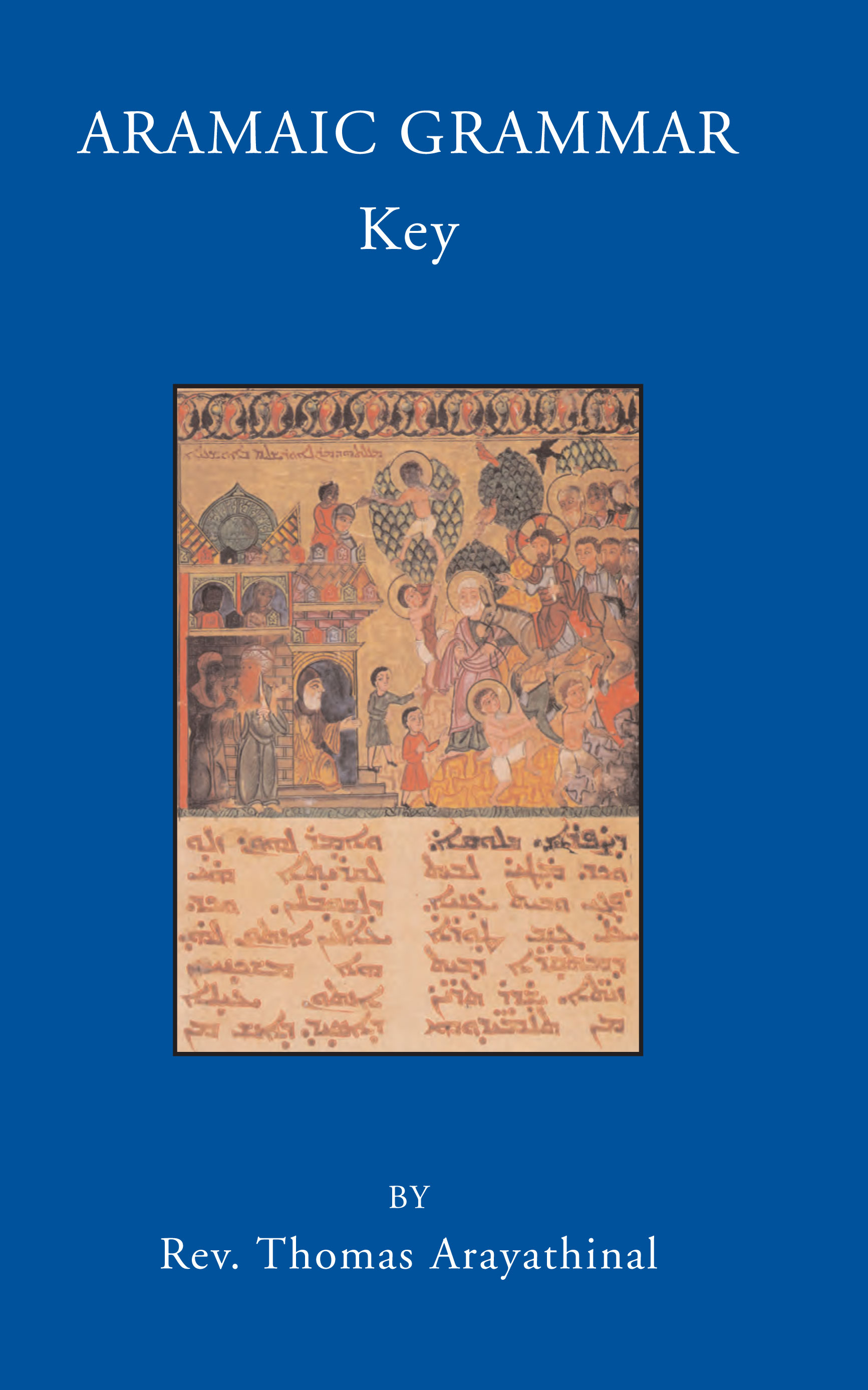 (Download Sample Pdf) |
Aramaic Grammar Vol I & II(Approved by the University of Kerala) By Rev. Fr. Thomas Arayathinal, M. O. L. Printed at - St. Joseph's Press, Mannanam, Kerala, India. 1957 |
|
* RR 013 008-013 |
 (Download Sample Pdf) |
ധർമമഗീതി
|
|
* RR 012 008-012 |
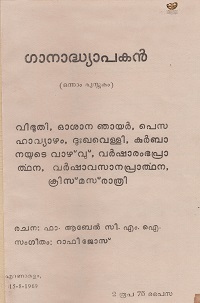 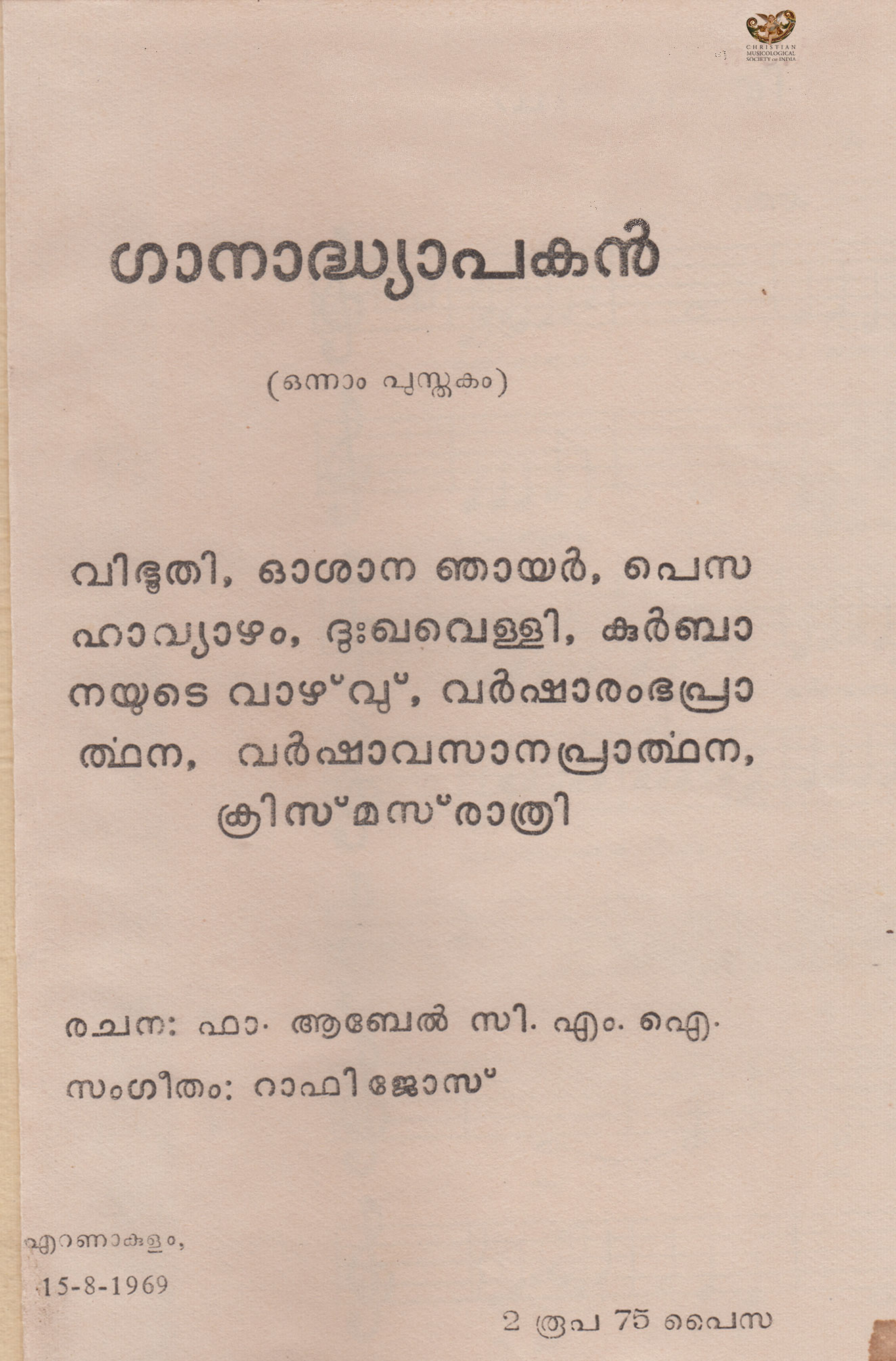 (Download Sample Pdf) |
ഗാനാദ്ധ്യാപകൻ
|
|
RR 011 008-011 |
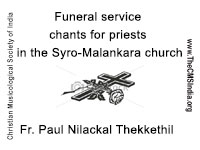 |
Funeral services for priests in the Syro-Malankara churchChants sung by Fr.Paul Nilackal Thekkethil. Recorded at Oasis Digital Studio, Ranni, Kerala on 18-19 Feb 2012. In this recording, electronic tamburu was used for sruti; in actual service organ, keyboard, or harmonium is used for accompaniment. |
|
RR 010 008-010 |
Deleted | |
|
008-010a |
Deleted | |
|
008-010b |
Deleted | |
|
RR 009 008-009 |
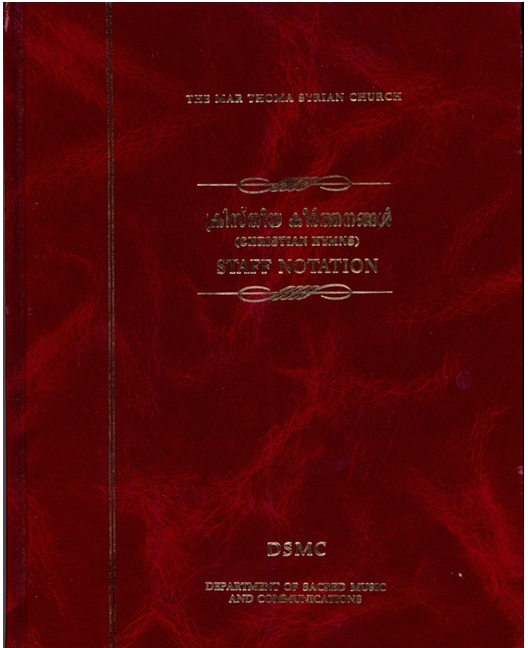
 |
Kristeeya Keerthanangal (Christian Hymns): Staff NotationPublished by Department of Sacred Music and Communications, The Mar Thoma Syrian Church, Thiruvalla (2002). Pp. ii + 757. Contains notation of over 484 melodies from the liturgy of the Mar Thoma Church. Certain significant details regarding the structure of the lyrics (pallawi-anupallawi-charanam, for example) and meter are missing in this edition. For these and other important information on the hymns, researchers may consult Malankara Mar Thoma suriyani sabha parasyaradhanakramam (Order of Public Worship of the Malankara Mar Thoma Syrian Church), published by the Mar Thoma Sabha Publication Board, Thiruvalla. |
|
* RR 008 008-008 |
Puratanappatukal (Ancient Songs (of the Syrian Christians of Malabar) by P. U. Lukas.Compiled by P. U. Lukas (Puthenpurackal Uthup Lukas). 10th ed. Kottayam: Jyothi Book House. 2002. First published in 1910. Pp. xxxiv + 240. This book includes the complete text (pp.142 - 155) of the songs of Marggam Kali.
|
|
|
RR 007 008-007 |
Die Melodien des Chaldaischen... by Heinrich Husmann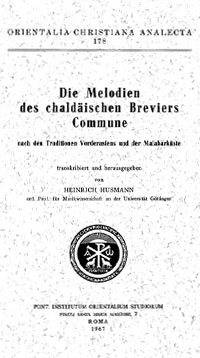
Die Melodien des Chaldaischen Breviers Communenach den Traditionen Vorderasiens und der Malabarkuste, edited by Heinrich Husmann. Orientalia Christiana Analecta, no. 178. Rome: Pontificum Institutum Orientalium Studiorum, 1967. Part I: Die Melodien des Commune des Chaldaischen Breviers, ach der tradition des vorderen orientes. Gesungen von P. Ephrem Bede, Chaldaischer Chorbischof, Patriarchalvikar in Kairo. Part II: Die Melodien des commune des Chaldaischen Breviers, nach der tradition der Indischen christen der Malabarkuste. Gesungen von P. Amos C. M. I., Generelakonom des Ordens Carmelitarum Mariae Immaculatae, Prior General’s House, Ernakulam, Kerala. |
|
RR-007a 008-007a |
 |
Our Liturgical Music Traditions(Nammute ārādhanakṛama gāna pāramparyam) by Fr. Amos CMI Letter to the Editor Carmela Sandhesam Dec 1991 Keywords - Fr. Amos CMI, Fr. Alexander Kattakkayam, Carmela Sandesham, Syriac Chants and The Carmelites of Mary Immaculate, Heinrich Husmann, Arnos Pathiri, Joseph Palackal, CMI |
|
RR 006 008-006 |
|
Qambel Maran: Syriac Chants from South IndiaThe CD, Qambel Maran: Syriac Chants from South India contains six chants (tracks 19 to 24) from an interesting repertoire of texts that were translated from Latin into Syriac in Kerala during the Portuguese period. These texts were composed anew in Kerala, mostly for paraliturgical services. See a preliminary study of the Syriac version of the famous Latin chant Pange Lingua by St. Thomas Aquinas, in Palackal (2005: 112-117). These chants are reference points for a special period in the history of Christianity and Christian music in India . Please refer the Booklet (p11 to p13) accompained by the CD - Qambel Maran: Syriac Chants from South India |
|
RR 005 008-005 |
Kerala Kaldaaya Suriyaani Reethile Thirukkarmma Geethangal by Fr. Mathew Vadakel and Fr. Aurelius.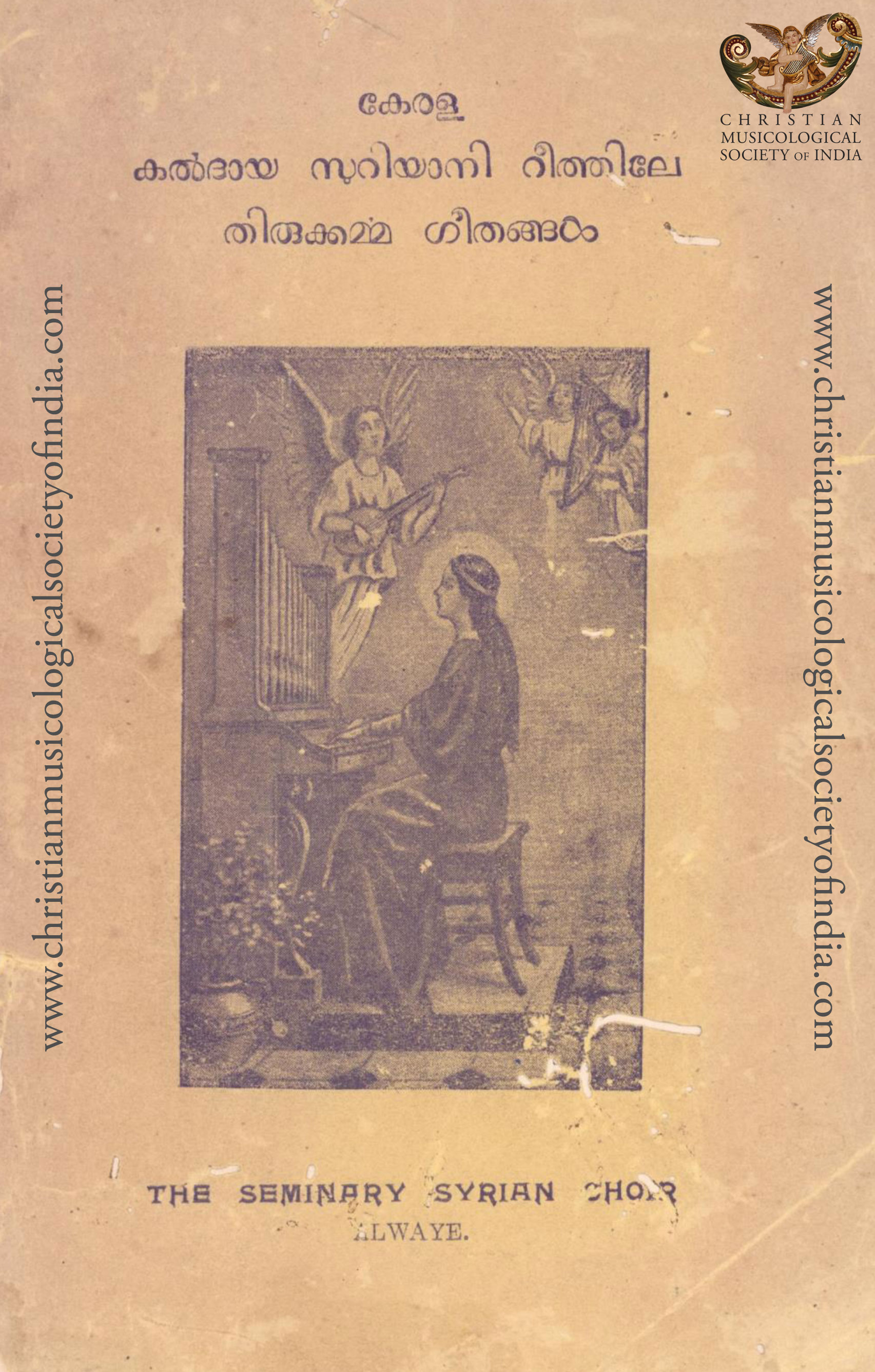
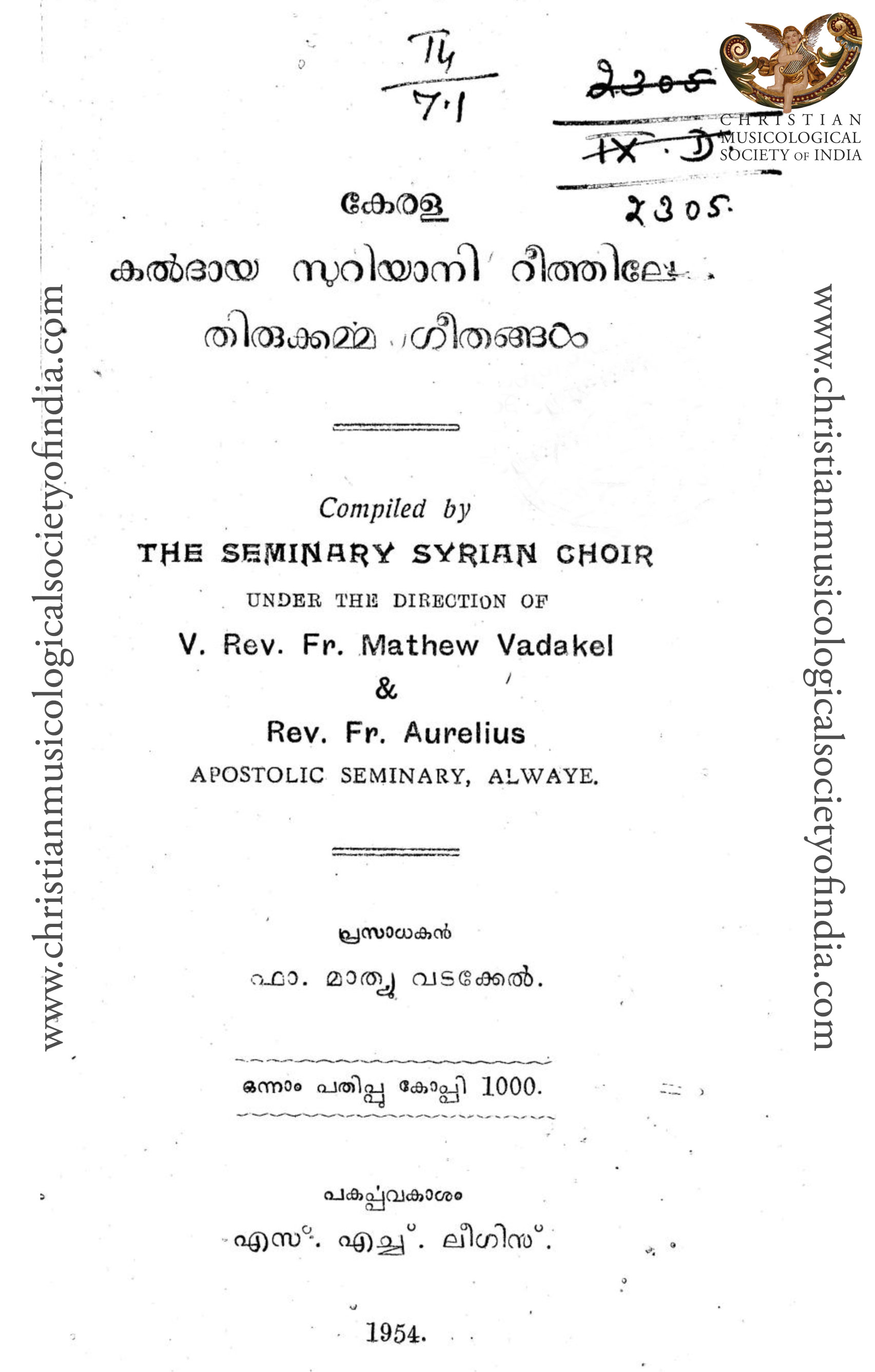 Liturgical Hymns of the Chaldeo-Syrian rite of Kerala
Liturgical Hymns of the Chaldeo-Syrian rite of Kerala
Syriac texts transliterated in Malayalam script, Music in staff notation.
|
|
|
RR 004 008-004 |
 |
The Syriac-Malayalam Hymnal, edited by Rev. Saldanha A, S. J.Printed at Codialbail Press, Mangalore, for the Cathedral Church, Calicut, in 1937. Pp. 27 + 181 + x + v. Part I: Syriac chants of the solemn high mass of the Chaldeo-Syrian rite of Kerala (text transliterated in Malayalam, music in Western staff notation). Part II: Malayalam devotional songs in Western staff notation. This is the first publication of Syriac melodies in staff notation in India. Probably, these melodies were composed in Kerala. The Preface (in English and Malayalam, pp. 9-18) by Rev. Saldanha is quite informative, among other things, on the status Christian music in Kerala in the first quarter of the twentieth century. |
|
RR 003 008-003 |


|
Manuscript of Syriac chants in staff notation by Fr. Aiden Kulathinal, C. M. I.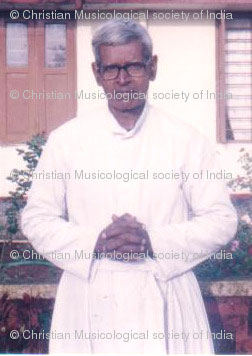
Copied in 1948 from an earlier manuscript (now lost) by Fr. Aiden Kulathinal, C. M. I., at St. Theresa's Monastery at Ampazhakkadu, Kerala. So far as we know, this manuscript contains the earliest transcriptions of model melodies from the liturgy of the Hours in the Chaldean rite of the Syro-Malabar Church, India. The 27 pages are divided into three sections: pages 1-14 contain 51 Syriac melodies from the Hours; pages 15-19 consist of notation of what looks like Western melodies (to be verified) without text underlay; and pages 20-27 contain Marian litanies in Latin with Syriac translation. The Syriac texts are written in Malayalam script. The original copy is at the library at Acharaya Palackal Jeevass Kendram, Aluva, Kerala. See more details in Palackal 2005, pp. 134-135. Letter written by Fr. Aiden Kulathinal, C. M. I. to Joseph. J. Palackal. |
|
RR 002 008-002 |
||
Ist Edition.png) (Download Sample Pdf) (Open in FlipBook) |
Dewalaya Geethangal (Malayalam, Church hymns), edited by Fr. Basselios of St. Theresa, T. O. C. D.ദേവാലയ ഗീതങ്ങൾ Ist Edition - 1902 Printed at - St. Mary's Press, Elthuruth (1902). 172 pages (10 cms x 15 cms)The book contains text of Syriac hymns for various occasions, for the use of the church choir. A large number of hymns are translations of Latin chants that were composed anew in Kerala. Names of translators and composers of the melodies are unknown. The text is printed in Malayalam script, indicating that Syriac literacy was on the wane among the lay people in the Syro-Malabar Church, by the end of the 19th century. |
|
RR 002a 008-002a |

(Download Sample Pdf) (Open in FlipBook) |
Dewalaya Geethangal (Malayalam, Church hymns), edited by Fr. Basselios of St. Theresa, T. O. C. D.- VIIth Editionദേവാലയ ഗീതങ്ങൾ VII-th Edition-1954 The book contains text of Syriac hymns for various occasions, for the use of the church choir. A large number of hymns are translations of Latin chants that were composed anew in Kerala. Names of translators and composers of the melodies are unknown. The text is printed in Malayalam script, indicating that Syriac literacy was on the wane among the lay people in the Syro-Malabar Church, by the end of the 19th century. Printed at - St. Joseph's A.S. Press, (188 pages) Book Courtesy - Joseph Thekkedath Puthenkudy |
|
RR 001 008-001 |

(Download Sample Pdf)
(Open in FlipBook) |
The Marriage Customs and Songs of the Syrian Christians of Malabar by Dr. P. J. Thomas
|

